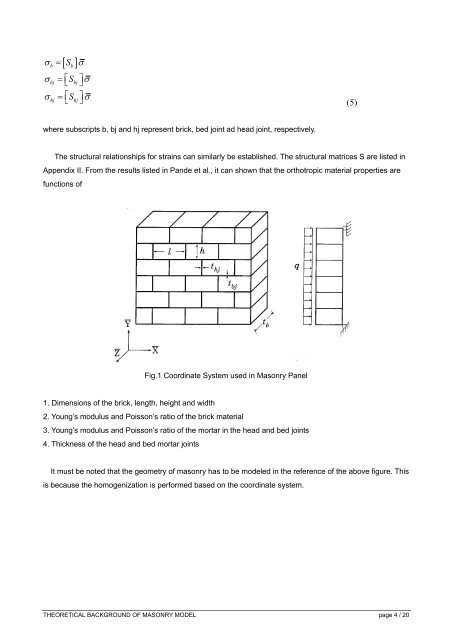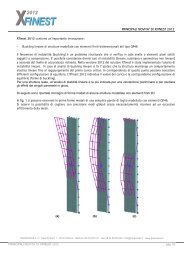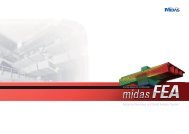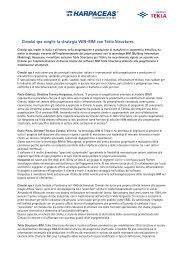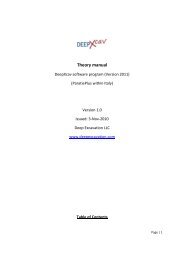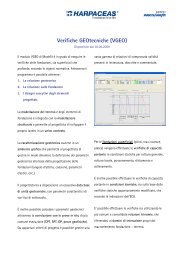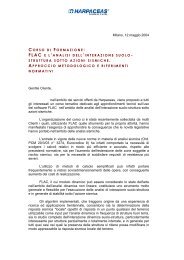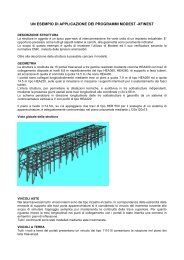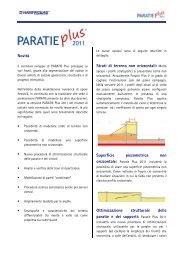THEORETICAL BACKGROUND OF MASONRY MODEL
THEORETICAL BACKGROUND OF MASONRY MODEL
THEORETICAL BACKGROUND OF MASONRY MODEL
Create successful ePaper yourself
Turn your PDF publications into a flip-book with our unique Google optimized e-Paper software.
σ =<br />
σ<br />
σ<br />
b<br />
[ S ]<br />
b<br />
⎡S<br />
bj<br />
= ⎣ bj ⎦<br />
⎡S<br />
σ<br />
⎤σ<br />
⎤σ<br />
hj<br />
= ⎣ hj ⎦ (5)<br />
where subscripts b, bj and hj represent brick, bed joint ad head joint, respectively.<br />
The structural relationships for strains can similarly be established. The structural matrices S are listed in<br />
Appendix II. From the results listed in Pande et al., it can shown that the orthotropic material properties are<br />
functions of<br />
Fig.1 Coordinate System used in Masonry Panel<br />
1. Dimensions of the brick, length, height and width<br />
2. Young’s modulus and Poisson’s ratio of the brick material<br />
3. Young’s modulus and Poisson’s ratio of the mortar in the head and bed joints<br />
4. Thickness of the head and bed mortar joints<br />
It must be noted that the geometry of masonry has to be modeled in the reference of the above figure. This<br />
is because the homogenization is performed based on the coordinate system.<br />
<strong>THEORETICAL</strong> <strong>BACKGROUND</strong> <strong>OF</strong> <strong>MASONRY</strong> <strong>MODEL</strong> page 4 / 20


